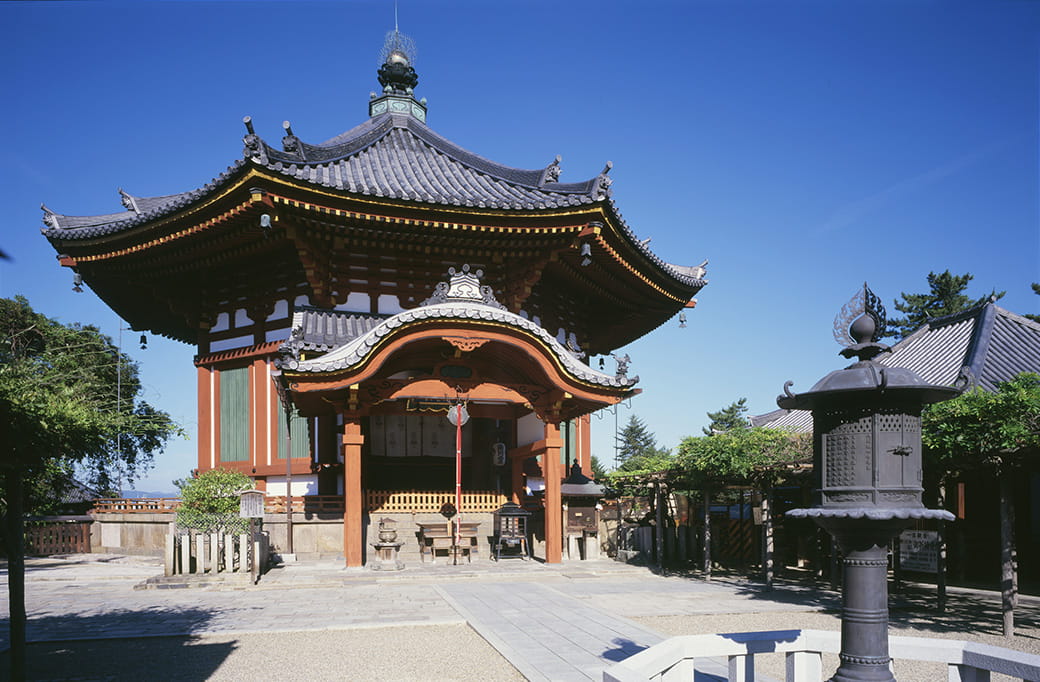Southern Round Hall
Important Cultural Property

Most famous today as the ninth station on the pilgrimage route of the “Thirty-three Temples of Western Japan,” the Southern Round Hall was initially constructed in 813 by Fujiwara no Fuyutsugu as a memorial chapel for his father Uchimaro. Since its founding, Kohfukuji has served as the family temple of the most powerful aristocratic clan in Japanese history, the Fujiwara. Over time, one of the branches of this family accrued such political and economic preeminence that it came to be referred to as the “House of Regents.” Since this branch venerated Uchimaro and Fuyutsugu as the ancestral founders of their lineage, the Southern Round Hall attained a special status as the tutelary shrine of this powerful family.
The hall was destroyed by fire a total of four times, most recently in 1717. The architectural style of the present structure (erected between 1741 and 1789) evokes that of earlier periods, and appears to have been modeled on the Northern Round Hall (completed in 1210). The undulating gables of the worship hall attached to the front of the building, however, are a characteristic feature of Edo-period (1603-1868) architecture.
The principal icon of the hall is a three-eyed, eight-armed image of Fukūkensaku Kannon (“the Kannon who bears the infallible snare”) that wears a deer skin draped over its left shoulder. It is surrounded by a set of six seated images of Japanese patriarchs of the Hossō School, as well as standing images of the Four Heavenly Kings. All of these images, which were produced in the workshop of the sculptor Kōkei and completed in 1189, have been designated National Treasures.

